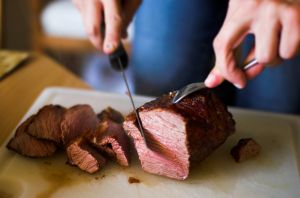 When someone asks me what kind of eater I am, I usually say “conscious.” I spent years defining myself as a vegetarian, only to obsess over an unattainable hamburger and then fall completely off the plant-based bandwagon when I couldn’t deny myself any longer.
When someone asks me what kind of eater I am, I usually say “conscious.” I spent years defining myself as a vegetarian, only to obsess over an unattainable hamburger and then fall completely off the plant-based bandwagon when I couldn’t deny myself any longer.
Last year, I finally stopped seeing the food world in black and white and realized that I was happier eating greens, beans and tofu most of the month, with the occasional serving of organic steak or wild-caught salmon once every 30-to-60 days—minus the guilt.
It’s been truly liberating—although it’s also been a challenge to cook for my three kids, who were used to chicken or beef on a thrice-weekly basis. I still cook meat for them about once a week, but I also offer a veggie main course: They eat mostly meat and a little tofu; my husband and I stick to the tofu and skip the meat. It works out.
Vegan, vegetarian, pescatarian, carnivore, omnivore. We have a label for every type of eating preference these days. But it seems to me that sometimes we spend more time thinking about the label than the decision-making process behind it.
Last week’s release of the Environmental Working Group’s new “Meat Eaters Guide to Climate Change and Health,” showed how important it is to look at the physical—on ourselves, and our planet—repercussions of eating meat. Especially for parents, the guide is an eye opener.
Find out more at HealthyChild.org.
by Rachel Lincoln Sarnoff, Executive Director/CEO, Healthy Child Healthy World. Reprinted with permission.




